Military Studies > Research Paper > Defense Acquisition University CLM 031 Improved Statement of Work: The purpose of requirements d (All)
Defense Acquisition University CLM 031 Improved Statement of Work: The purpose of requirements documents (SOO/ SOW/PWS) is to establish those tasks that contractors must perform.
Document Content and Description Below
Defense Acquisition University CLM 031 Improved Statement of Work The purpose of requirements documents (SOO/ SOW/PWS) is to establish those tasks that contractors must perform. The SOW/PWS sh... ould specify in clear, understandable terms the work to be done in developing or producing the goods to be delivered or services to be performed by a contractor. The SOW/PWS defines (either directly or by reference to other documents) all work (task) requirements for the contractor effort. The purpose of the SOO is to provide the basic, top level objectives of the acquisition and is provided in the Request for Proposal (RFP) in lieu of a Government written SOW/PWS. (The primary source document for writing a statement of work is the Handbook for Preparation of Statement of Work (SOW) MIL- HDBK - 245.) This approach provides potential offerors the flexibility to develop cost effective solutions and the opportunity to propose innovative alternatives meeting the stated objectives. The RFP Package Contract Format The following outline presents the contract format of the RFP Package: Part I: The Schedule A. Solicitation/Contract Form B. Supplies or Services and Prices/Costs C. Description/Specification/Work Statement (SOW/PWS) D. Packaging and Marking E. Inspection and Acceptance F. Deliveries and Performance G. Contract Administration Data Special Contract Requirements Part II: Contract Clauses I. Contract Clauses (FAR/DFAR) Part III: List of Documents, Exhibits, and Other Attachments J. List of Attachments (SOO) Part IV: Representatives and Instructions K. Representations, Certifications, and Other Statements of Offerors L. Instructions, Conditions, and Notices to Offerors (Example: Offeror to develop SOW from the SOO) M. Evaluation Factors for Award (Example: cost, schedule, performance, past history) The purpose of performance-type requirements documents (SOO, SOW, PWS) is to establish tasks: (Select all that apply) that contractors must perform.in clear, understandable terms and describe the work to be done, and provide potential offerors the flexibility to develop cost effective solutions, and provide the opportunity for contractors to propose innovative alternatives. Potential benefits to performance-type requirements documents (SOO, SOW, PWS) include state-of-the art advances, since offerors have the opportunity to propose innovative alternatives meeting the stated objectives.lower cost, since offerors have the flexibility to develop cost effective solutions. Solicitations and Contract Requirement Documents The key requirements documents included in the RFP are: A SOW to be performed. In some cases, the RFP contains a SOO rather than a SOW. In this case, a potential contractor will write a SOW based on the SOO and submit it with their bid. Performance work statement (PWS). Describes the requirement in terms of measurable outcomes rather than by means of prescriptive methods. A definition of the system. Appropriate product/process/service specifications and any additional baseline information necessary for clarification from this documentation. A definition of all data required by the government. In DoD this is accomplished through use of the Contract Data Requirements List (CDRL). The information required to be in the contractor's bid responding to the solicitation is important to the program office. An integrated product team (IPT-engineering, test, production, support, etc.) will decide the technical and technical management merits of the proposals. If the directions to the offerors are not clearly and correctly stated, the proposal will not contain the information needed to evaluate the offerors. New Acquisition Procedures/Policy What was once an environment of government oversight and restraint is now a Performance-based Business Environment (PBBE). The traditional method for conducting business was based on tight government control through contractually requiring compliance with large numbers of military specifications and standards. These military specifications and standards frequently required obsolete processes and materials, oftentimes conflicted with one another, and deterred innovative business practices. New Acquisition Procedures Conversely, in the new business environment, contractors are held accountable for their products and process through a PBBE discipline. This includes an improved technical definition process coupled with flexible business options that take into account technology, system support concepts, and affordability. With new acquisition procedures, streamlined risk management is built on long-term business relationships, a clear understanding of the external environments, and more contractor self-governance. Additionally, up-front planning is emphasized to address operational support requirements with flexible sustainment options and to provide meaningful incentives to foster long-term contractor involvement. Source Selection determines which offeror will become the contractor, so this choice can have profound impact on program risk. The technical manager (systems engineer, quality assurance specialist, test engineer, safety manager, etc.) must approach the Source Selection with great care. Unlike many planning decisions made early in product life cycles, the decisions made relative to Source Selection cannot be easily changed once the process begins. Laws and regulations governing the fairness of the process require that changes be made carefully, and often at the expense of considerable time and effort on the part of program office and contractor personnel. In this environment, even minor mistakes can cause distortion of proper selection. The Source Selection process starts with the development of a Source Selection Plan (SSP), which relates the organizational and management structure, the evaluation factors, and the method of analyzing the offeror's responses. Prior to solicitation issuance, a SSP is prepared by the program manager, reviewed by the contracting officer, and approved by the Source Selection Authority (SSA). An SSP generally consists of three parts: The first part describes the organization, membership, and responsibilities of the source selection team The second part identifies the evaluation factors The third part establishes detailed procedures for the evaluation of proposals The SSA is responsible for selecting the contractor with the proposal that is most advantageous to the government. The Source Selection Advisory Council (SSAC) provides advice to the SSA based on the Source Selection Evaluation Board's (SSEB) findings and the collective experience of SSAC members. The SSEB generates the information the SSA needs by performing a comprehensive evaluation of each offeror's proposal. A technical evaluation review team(s) evaluates the technical portion of the proposals to support the SSEB. The SSA is responsible for selecting the contractor with the proposal that is most advantageous to the government. The Source Selection Advisory Council (SSAC) provides advice to the SSA based on the Source Selection Evaluation Board's (SSEB) findings and the collective experience of SSAC members. The SSEB generates the information the SSA needs by performing a comprehensive evaluation of each offeror's proposal. A technical evaluation review team(s) evaluates the technical portion of the proposals to support the SSEB. The program manager is responsible for developing and implementing the acquisition strategy, preparing the SSP and obtaining SSA approval of the plan before the formal solicitation is issued to industry. The technical manager supports the program manager's efforts. The contracting officer is responsible for: Preparation of solicitations and contracts Any communications with potential offerors or existing offerors Consistency of the SSP with requirements of the Federal Acquisition Regulation (FAR) and Defense Federal Acquisition Regulation Supplement (DFARS) And award of the contract The diagram to the right gives an overview of the DoD contracting process. As you can see from the illustration, the process consists of three phases: Acquisition Planning Source Selection Contract Administration Source Selection In the Source Selection phase, a solicitation is announced in the "Commerce Business Daily", which prompts potential contractors to submit bids to the government. The bids from the contractors are evaluated and any negotiation that is necessary to clarify points in the bids is held. A source, or contractor, is selected from the bid submissions, and the contract is awarded. Protests by unsuccessful bidders are handled at this time. Contract Process Each step of the 13 step flow chart has an arrow pointing to the next step in the process. The process is divided into 3 vertical sections: 1. Acquisition Planning 1. Requirement Determination 2. Requirement Specification 3. Procurement Requests-RFP 4. Underneath this section is another box labeled, "Procurement Planning" which has doubleheaded arrows between the two levels. 2. Source Selection 1. Solicitation 2. Evaluation 3. Negotiation 4. Selection of Source 5. Award 3. Contract Administration 1. Assignment 2. System Control 3. Performance Measurement 4. Contract Modifications 5. Completion Payment/Closeout The diagram to the right gives an overview of the DoD contracting process. As you can see from the illustration, the process consists of three phases: Acquisition Planning Source Selection Contract Administration Table of Improved Statement of Work Operational Contracting Approaches Diagram The diagram has four horizontal flow charts with steps connected by one-way arrows: 1. Option 1 a. CDD b. Evaluation Factors c. Instructions to Offerors d. Proposed concepts e. System spec f. WBS g. SOW h. Contract signed 2. Option 2 a. Select concepts b. Draft technical requirements and WBS c. SOO d. Evaluation factors e. Instructions to offerors f. SOW g. Contract signed 3. Option 3 a. CDD b. Draft system spec c. WBS d. SOW e. Evaluation factors f. Instructions to offerors g. Contract signed 4. Option 4 a. Detail spec and drawing b. SOW c. Instructions to bidders d. Contract signed Each option is divided into two segments, "Government Develops" and "Contractor Develops." The dividing line for each option is as follows: 1. Option 1: Between steps c and d 2. Option 2: Between steps e and f 3. Option 3: Between steps f and g Option 4: Between steps c and d Contract Administration Finally, the Contract Administration process addresses all actions that will occur after the contract is awarded. It is also in this phase that the Defense Contract Management Agency (DCMA) assists the project manager with the daily surveillance at the contractor's facility. Optional Contracting Approaches Option 1 maximizes contractor flexibility by providing the Capabilities Development Document (CDD) to offerors as the requirements document in place of a SOO or SOW. The offerors are requested to propose a method of developing a solution to the CDD. The government identifies its areas of concern in Section M "Evaluation Factors" to ensure the contractor will address them in the bid. Section L "Instructions to the Offerors" requires the bidders to write a SOW based on the CDD as part of their proposal. The offeror proposes the type of system. The contractor develops the system specification and the WBS. In general, this option is appropriate for early efforts where contractor input is necessary to expand the understanding of physical solutions and alternative approaches. Option 2 provides moderate contractor flexibility by submitting an SOO to the offerors as the Section C task document in place of an SOW. The government identifies its areas of concern in Section M "Evaluation Factors" to ensure the contractor will address them in the bid. Section L "Instructions to the Offerors" requires, as part of the bid, that offerors write an SOW based on the SOO. In this case, the government usually selects the type of system, writes a draft technical requirements document or system specification, and writes a draft WBS. This option is most appropriate when previous efforts have not defined the system tightly. The effort should not have any significant design input from the previous phase. This method allows for innovative thinking by the bidders in the proposal stage. It is a preferred method for design contracts. Option 3 lowers contractor flexibility and increases clarity of contract requirements. The SOW is written by the government and provided to the contractor as the contractual task requirements document. The government provides information in Section L "Instructions to the Offerors" that describes what the offeror must put in the bid so the government can evaluate the contractor's ability to accomplish the SOW tasks. The government identifies evaluation factors in section M to provide guidance for priority of the solicitation requirements. In most cases, the government selects the type of system and provides the draft system specification, as well as the draft WBS. This option is most appropriate when previous efforts have defined the system to the lower WBS levels or where the product baseline defines the system. Option 4 minimizes contractor flexibility, and requires maximum clarity and specificity of contract requirements. This option uses an Invitation for Bid (IFB) rather than an RFP. It provides bidders with specific detailed specifications or task statements describing the contract deliverables. They tell the contractor exactly what is required and how to do it. Because there is no flexibility in the contractual task, the contract is awarded based on the low bid. This option is appropriate when the government has detailed specifications or other product baseline documentation that defines the deliverable item in sufficient detail for production. It is generally used for simple build-to-print reprocurement. The Contracting Officer is responsible for preparation of solicitations and contracts, any communications with potential offerors or existing offerors, consistency of the SSP with requirements of the Federal Acquisition Regulation (FAR) and Defense Federal Acquisition Regulation Supplement (DFARS), and award of the contract. Acquisition reform initiatives that impact solicitation development include methods to provide increased contractor flexibility by having the program office submit a SOO to the offerors and methods to provide increased contractor flexibility by having the contractor write the task requirements in the SOW. The Program Manager (PM) is responsible for developing and implementing the acquisition strategy, preparing the SSP and obtaining SSA approval of the plan before the formal solicitation is issued to industry. The Source Selection Authority (SSA) is responsible for selecting the contractor with the proposal that is most advantageous to the government. The Source Selection Evaluation Board (SSEB) generates the information the SSA needs by performing a comprehensive evaluation of each offeror's proposal. The purpose of requirements documents (SOO/SOW/PWS) is to establish those tasks that contractors must perform. The SOW/PWS should specify in clear, understandable terms the work to be done in developing or producing the goods to be delivered or services to be performed by a contractor. The SOO is to provide the basic, top level objectives of the acquisition and is provided in the Request for Proposal (RFP) in lieu of a Government written SOW/PWS. One of four optional methods can be used to develop the documents that become contractual requirements. The appropriate method is selected to give the contractor the maximum amount of freedom based on the business and technical requirements of the program. The acquisition environment has become a Performance-Based Business Environment (PBBE) with more emphasis on contractor self-governance. Moreover, government requirements must be stated in terms of the mission need and written in terms of performance objectives to the maximum extent possible, rather than in design requirements. Prior to solicitation issuance, a Source Selection Plan (SSP) is prepared by the program manager, reviewed by the contracting officer, and approved by the Source Selection Authority (SSA). The SSA is responsible for selecting the contractor with the proposal that is most advantageous to the government. The program manager is responsible for developing and implementing the acquisition strategy, preparing the SSP, and obtaining SSA approval of the plan before the formal solicitation is issued to industry. The technical manager supports the program manager's efforts. The contracting officer is responsible for preparation of solicitations and contracts, any communications with potential offerors or existing offerors, consistency of the SSP with requirements of the Federal Acquisition Regulations (FARs) and Defense Federal Acquisition Regulation Supplement (DFARS), and award of the contract. SOO Preparation Purpose The Statement of Objectives (SOO ) is a brief, 1-to-4 page description of the basic, top-level objectives of the acquisition in the RFP. Offerors use the SOO as a basis for preparing a Statement of Work (SOW) which is then included as an integral part of their bid that the government evaluates during the source selection. This approach gives the offerors the flexibility to develop cost effective solutions and the opportunity to propose innovative alternatives. SOO Development Step 1: The RFP team develops a set of objectives compatible with the overall program direction including the following: User(s) operational requirements (Operational Requirements Document; Capabilities Development Document) programmatic direction Draft technical (specification) requirements Draft Work Breakdown Structure (WBS) and dictionary (can be derived from MIL-STD- 881) Step 2: Once the program objectives are defined, the SOO is written to address product-oriented goals and performance-oriented requirements. Example SOO The following example is one of the first SOOs used in a major program. Joint Air-to-Surface Standoff Missile (JASSM): Statement of Objectives The Air Force and Navy warfighters need a standoff missile that will destroy the enemies' war-sustaining capabilities with a launch standoff range outside the range of enemy area defenses. Offerors shall use the following objectives for the pre-Engineering and Manufacturing Development (EMD) and EMD acquisition phases of the JASSM program along with other applicable portions of the RFP when preparing proposals and program plans. Joint Air-to-Surface Standoff Missile (JASSM): Statement of Objectives Integrated Master Plan (IMP) events shall be traceable to this SOO: Pre-EMD Objectives Demonstrate, at the subsystem level as a minimum, end-to-end performance of the system concept. Performance will be at the contractor-developed system performance specification requirements level determined during this phase without violation of any key performance parameters. Demonstrate the ability to deliver an affordable and producible system at or under the Average Unit Procurement Price (AUPP). Provide a JASSM system review including final system design, technical accomplishments, remaining technical risks and major tasks to be accomplished in EMD. EMD Objectives Demonstrate ability to deliver an affordable and producible system at or under the AUPP requirement. Demonstrate all production processes. Produce production representative systems for Operational Test and Evaluation (OT&E), including combined Development/Operational T&E. This SOO is one of the first to be used. It was originally viewed as the leading example in the acquisition reform movement for its broadly written requirements and inclusion of risk, cost objectives, IMP (Systems Engineering Master Schedule (SEMS)), performance specification requirements, etc. Example of the process of Requirements Flow from the SOO to the SOW The following SOO contractor task requirements are generated by the government team and are supported in the evaluation criteria (Section M of the RFP): Quality Management System (QMS) equivalent to ISO 9001 requirements Systems Engineering Management (SEM) equivalent to EIA632 Configuration Management (CM) control equivalent to EIA/ISO649 Contractors respond to the SOO with their own unique SOW, preferably with the systems they have in place plus gaps from the preferred requirements. Contractor A is an "old" government contractor comfortable with the "old" government specifications. Contractor B has never had a government contract, but is a recognized and relevant technology leader. Contractor C has had a few government contracts, but is primarily a commercial supplier with whom we would like to do business (i.e., DoD is a minor customer). Evaluation Criteria Plan Deliverable Proposal Contractor A Proposal Contractor B Proposal Contractor C QMS Q Plan MIL-Q-9858A ISO9001 QS 9001 SEM SE Plan MIL-STD-499A IEEE1220 EIA632 CM CM Plan MIL-STD-937 EIA/ISO649 EIA/ISO649 A government team evaluates each proposal against the evaluation criteria, selects Contractor B's unique SOW based on "best value." All future government evaluations/assessments of this contract will be in accordance with the contractor's systems: ISO9001, IEEE1220, EIA/ISO649, etc. Advantages of this process (SOO to SOW) include: [Show More]
Last updated: 1 month ago
Preview 1 out of 22 pages
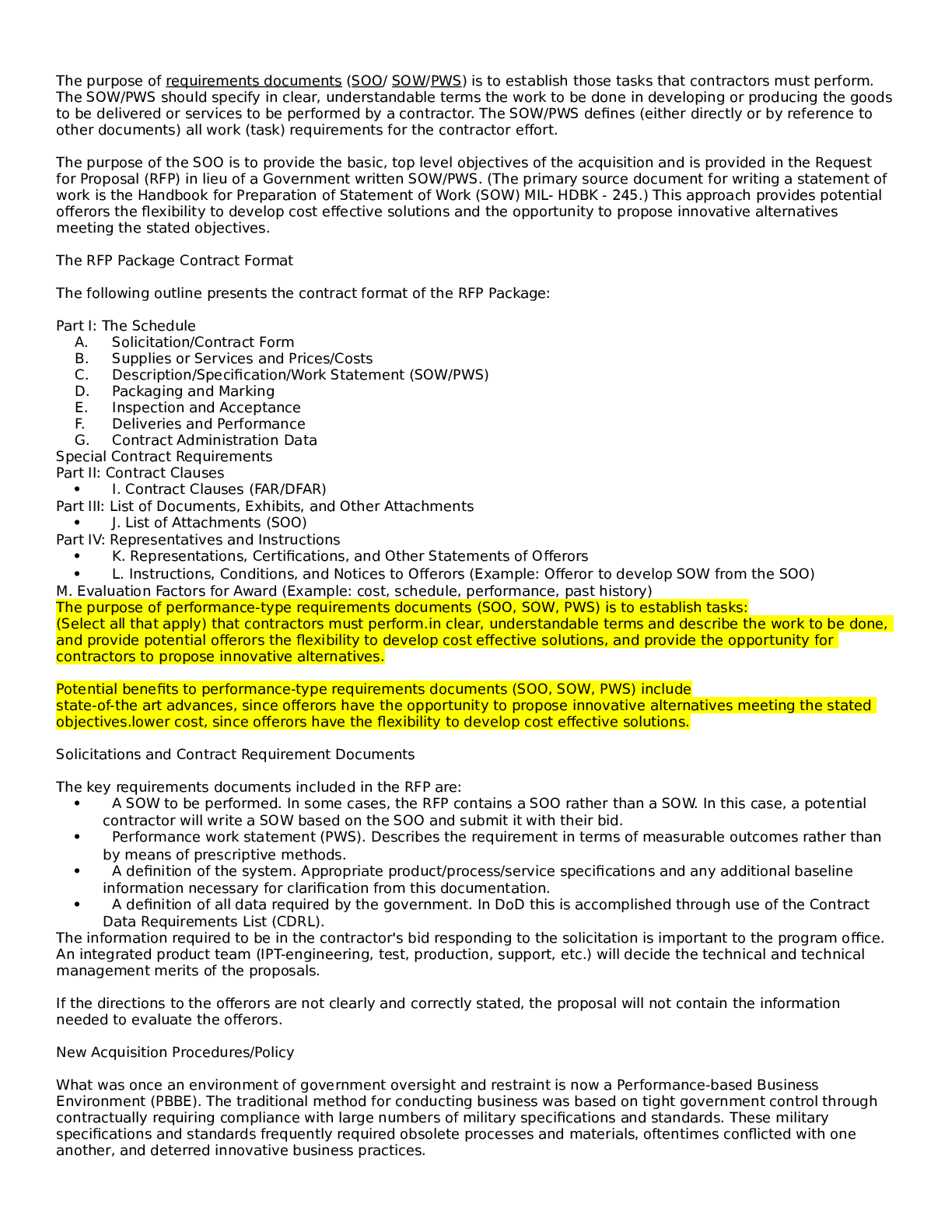
Reviews( 0 )
Document information
Connected school, study & course
About the document
Uploaded On
Nov 03, 2022
Number of pages
22
Written in
Additional information
This document has been written for:
Uploaded
Nov 03, 2022
Downloads
0
Views
49

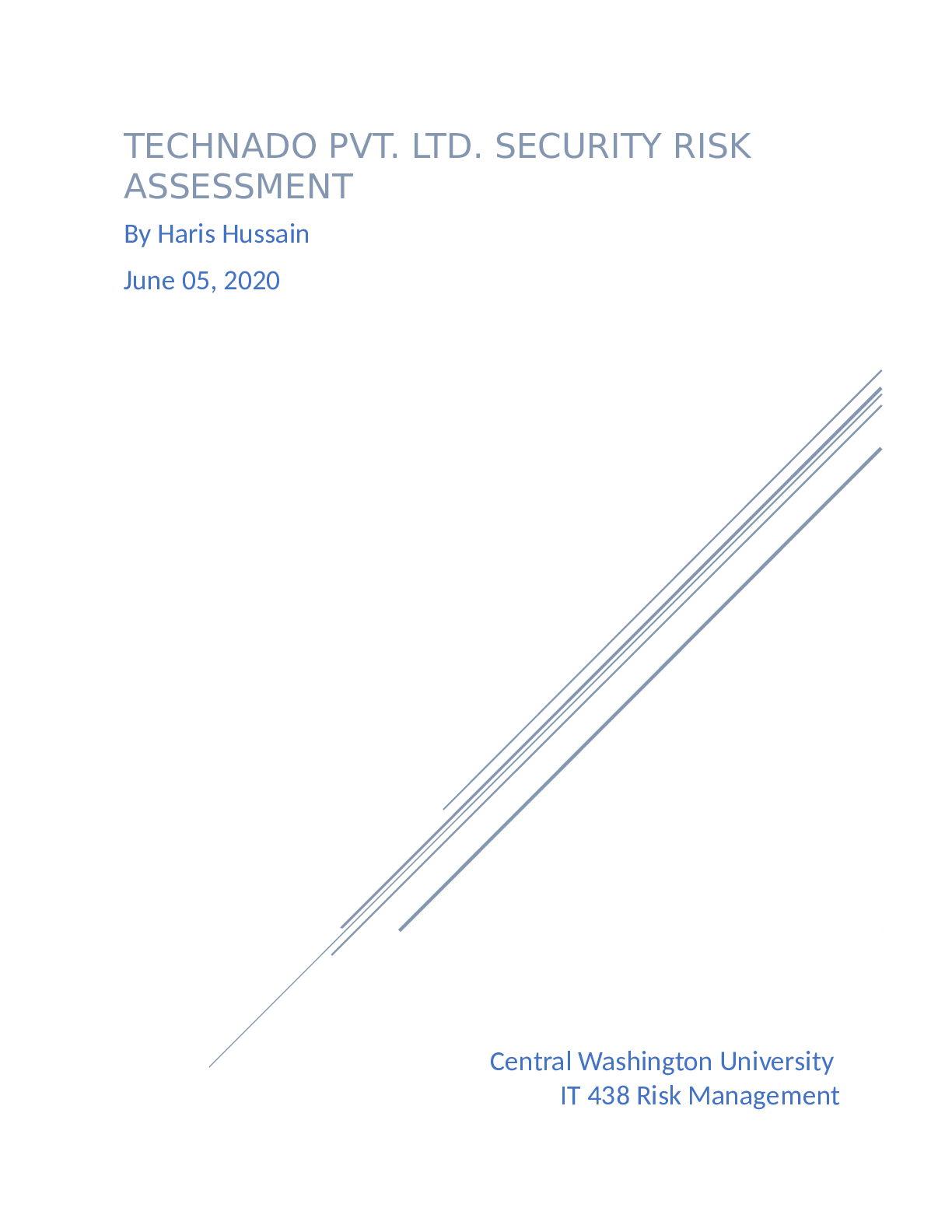
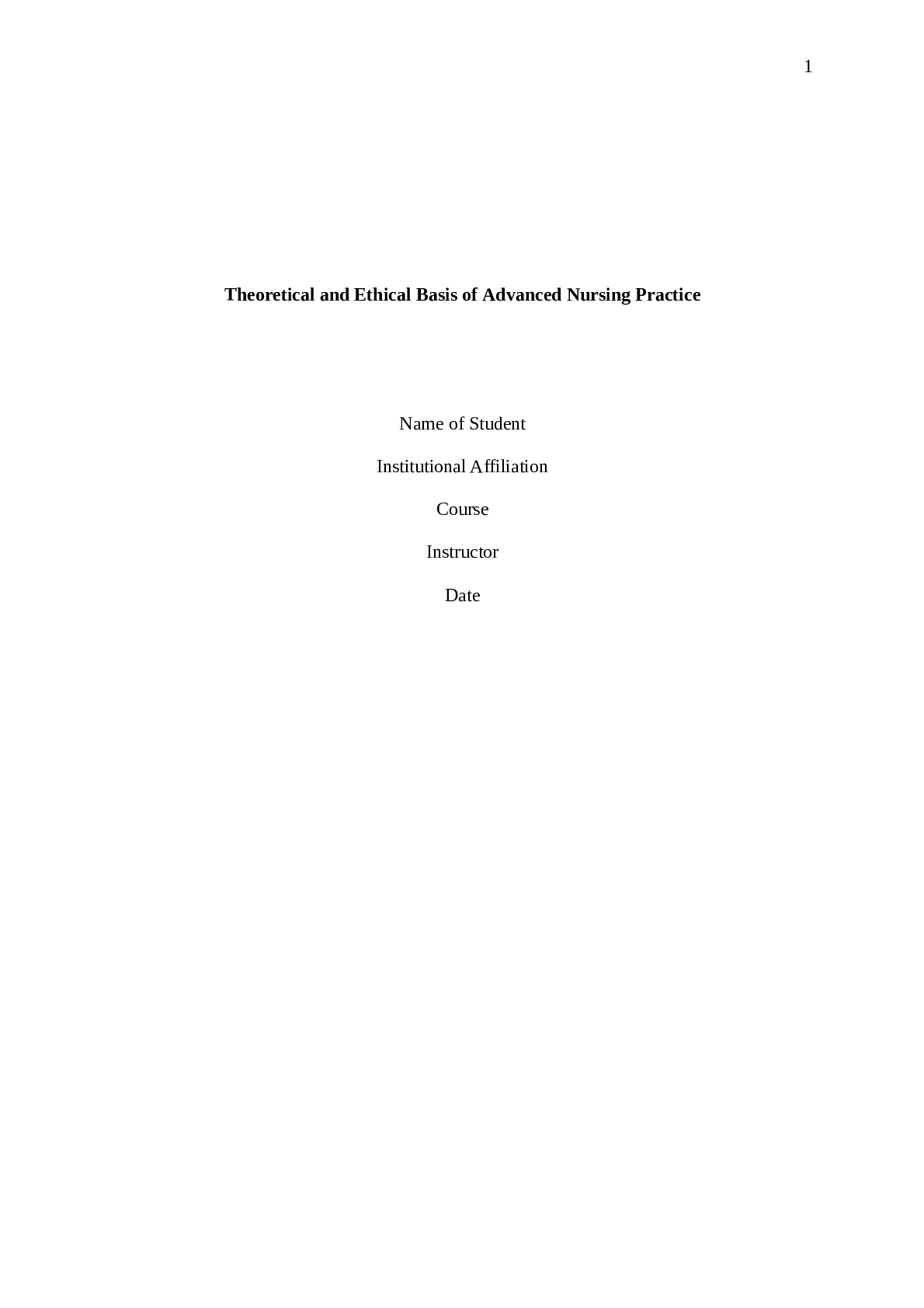
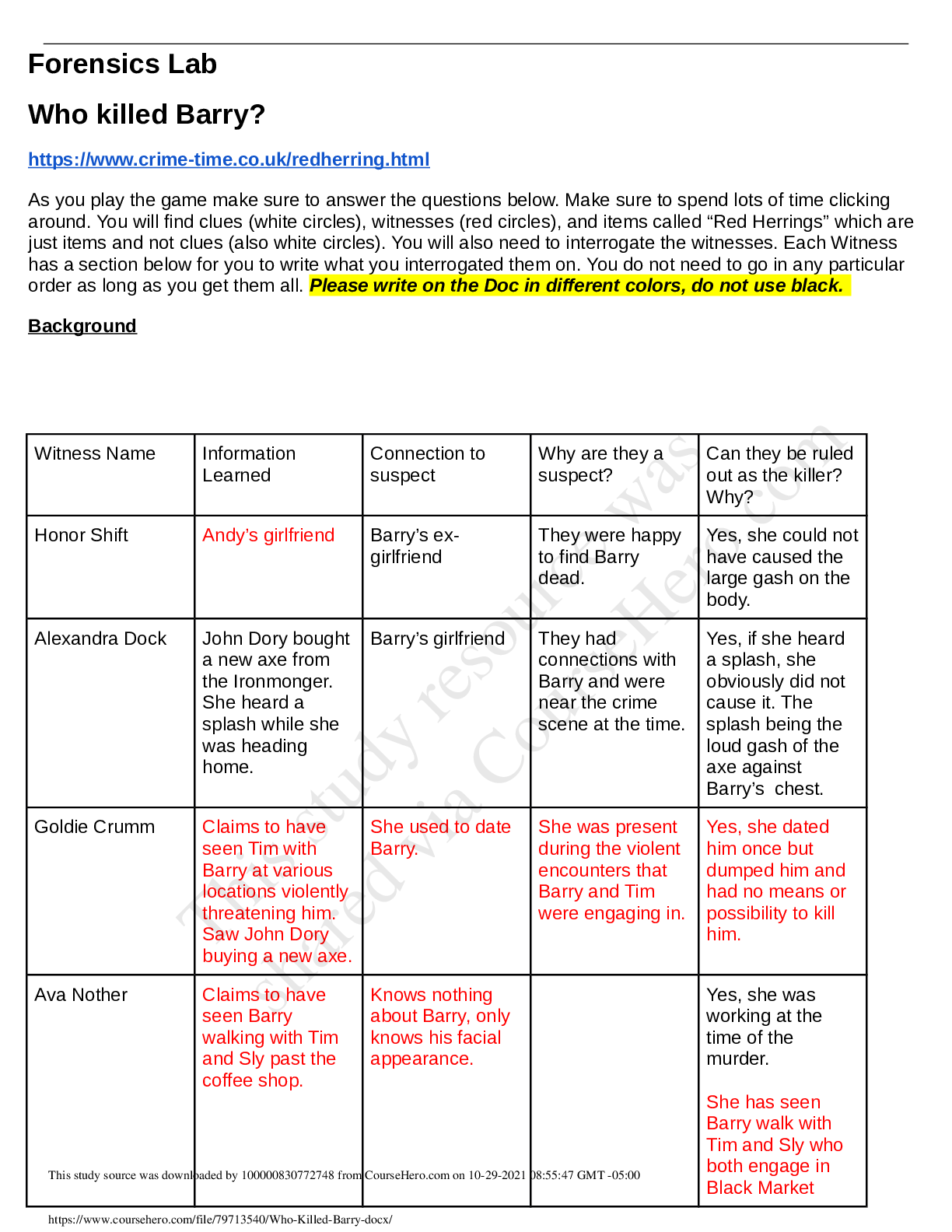
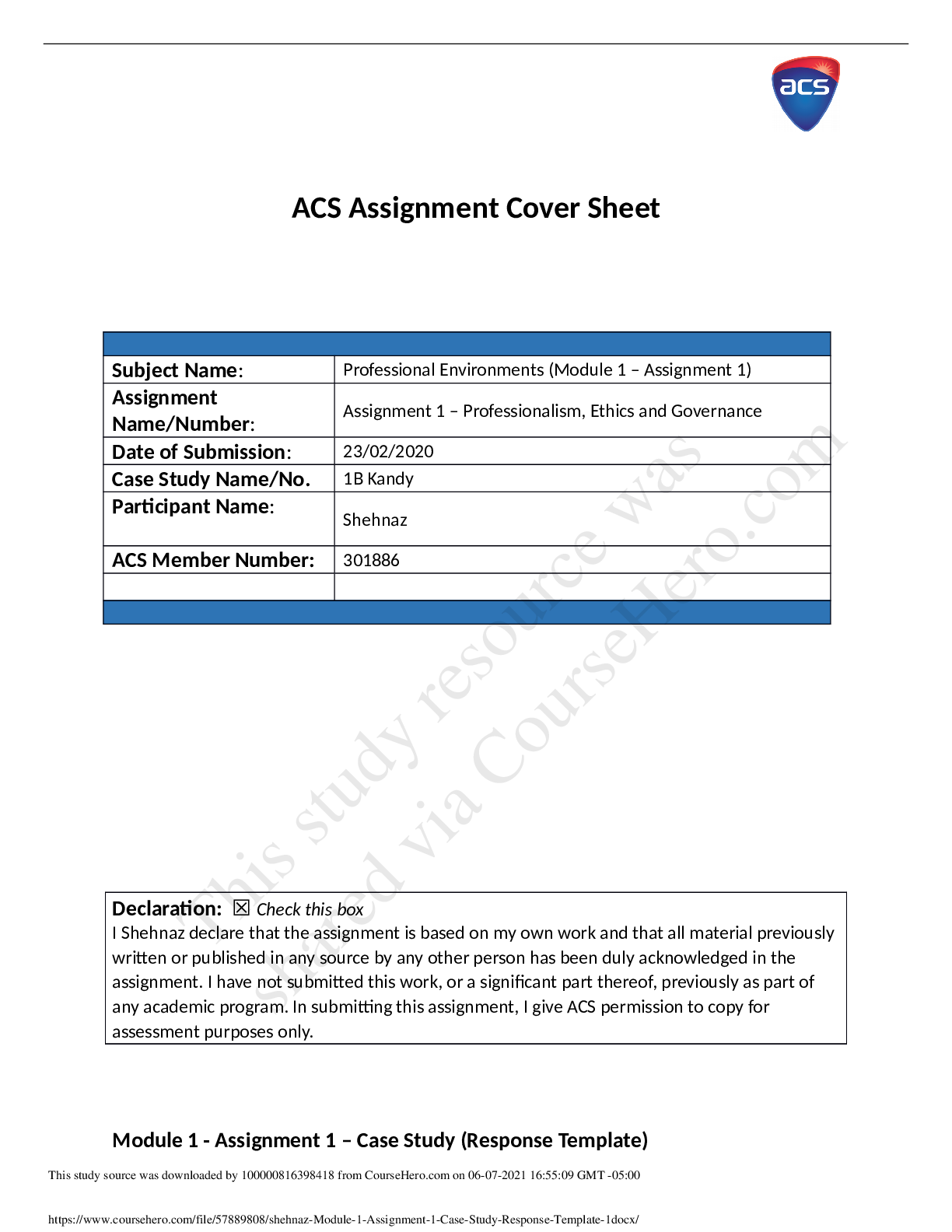

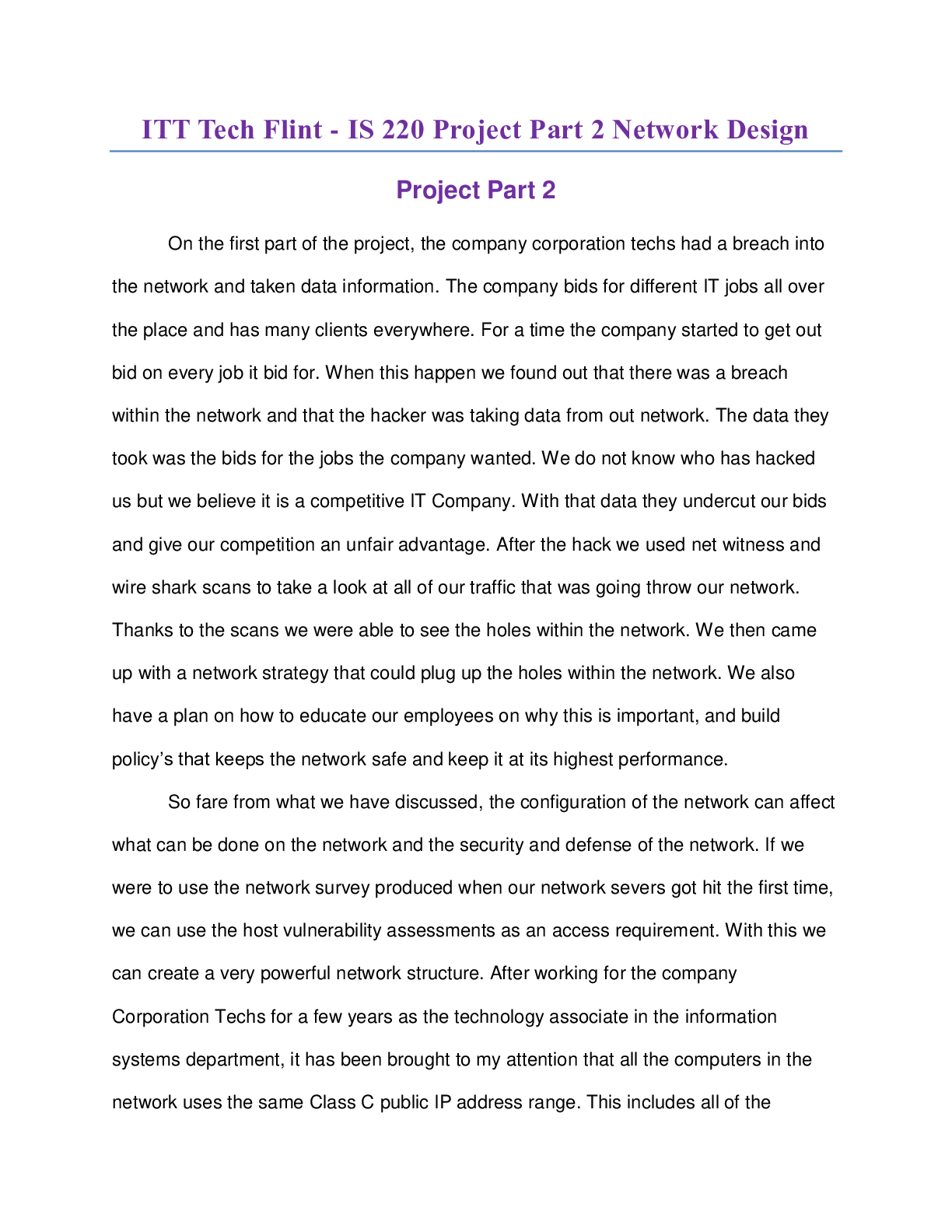
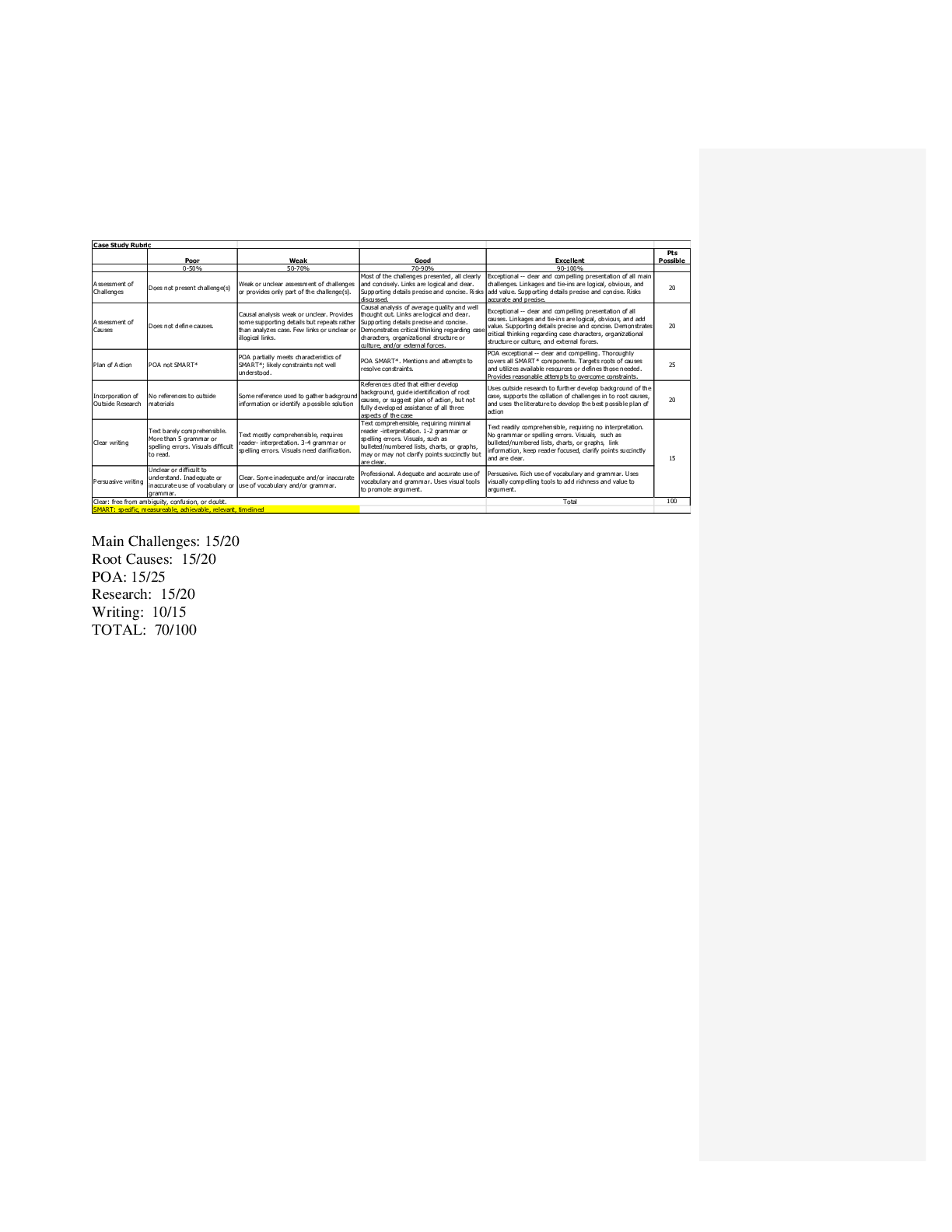


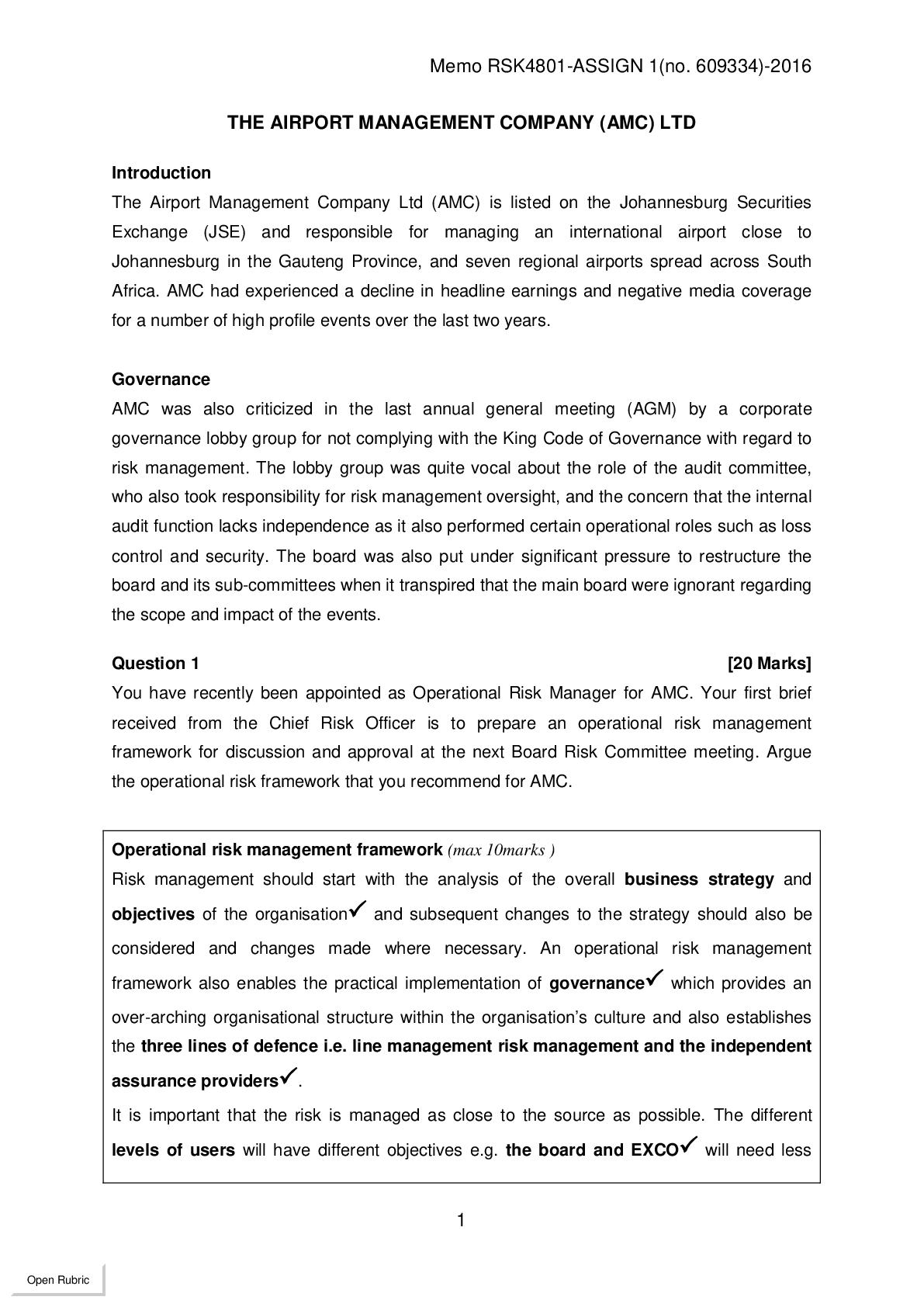
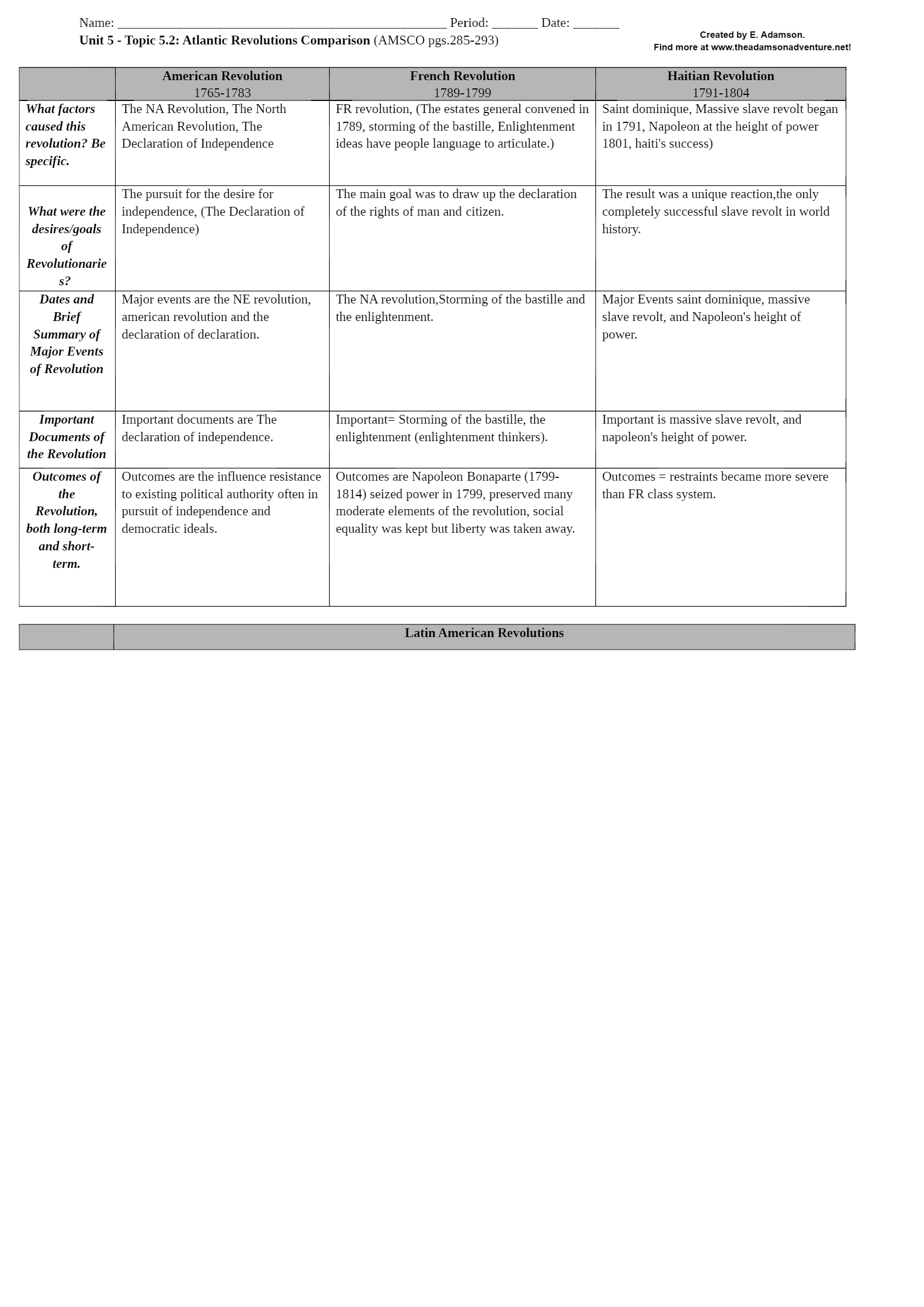

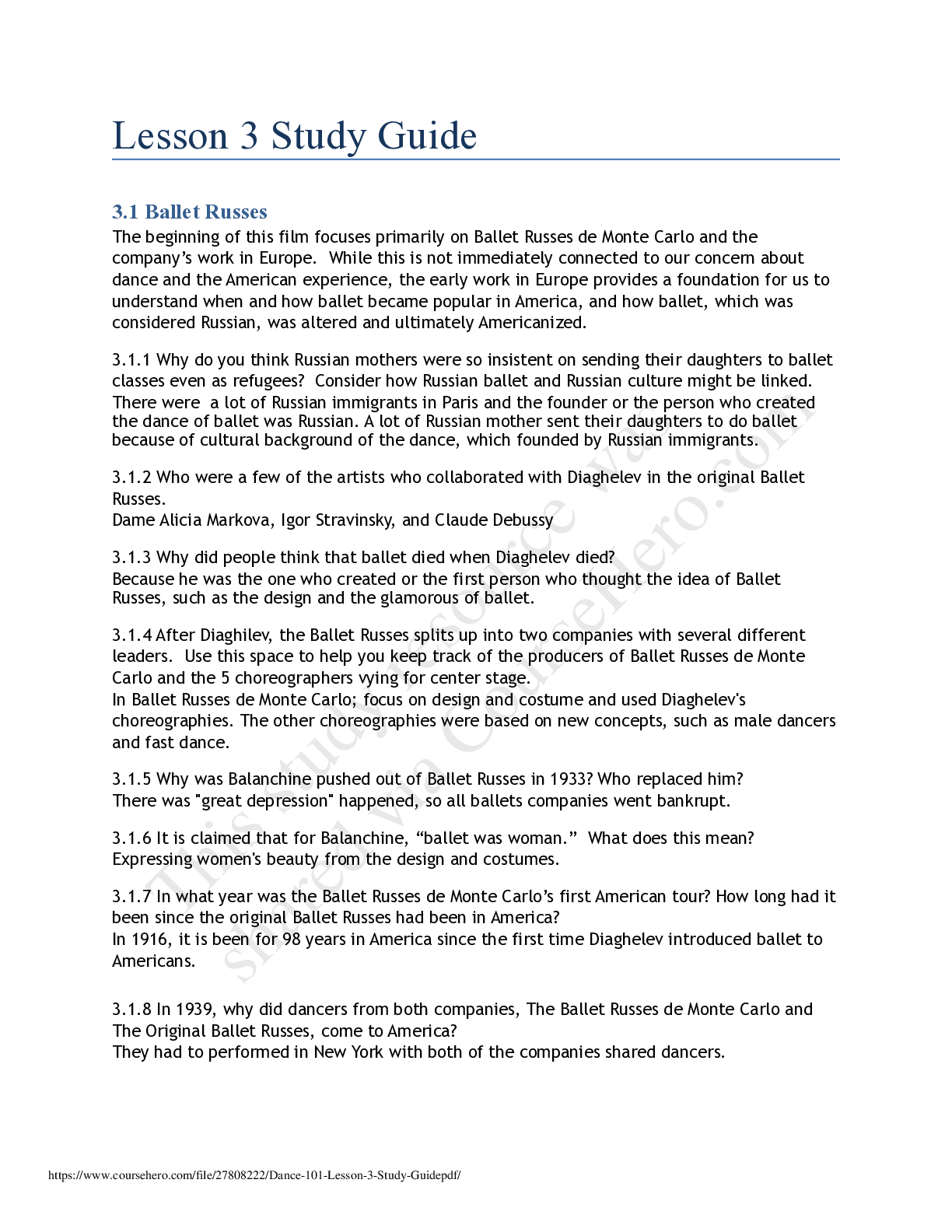
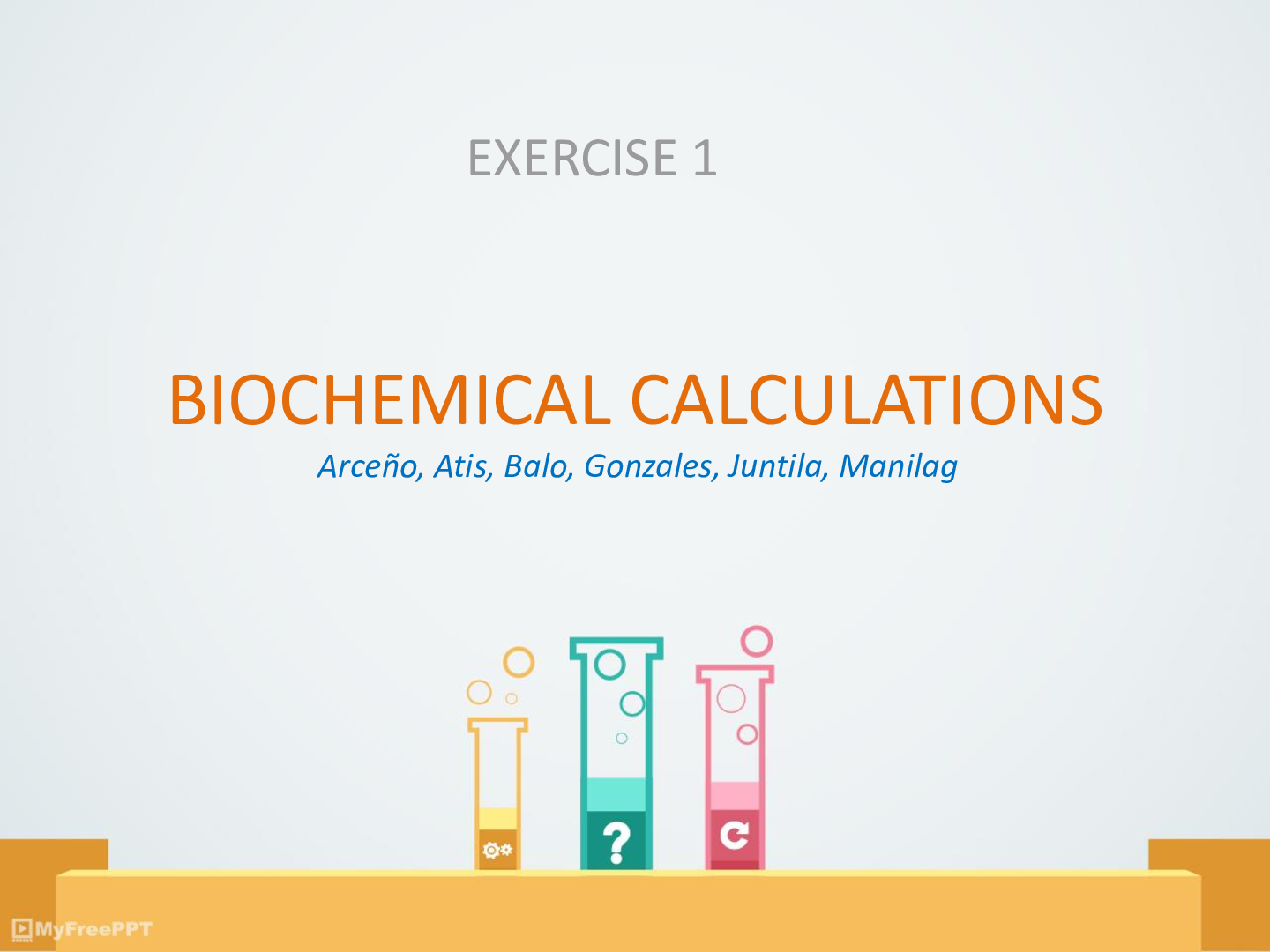
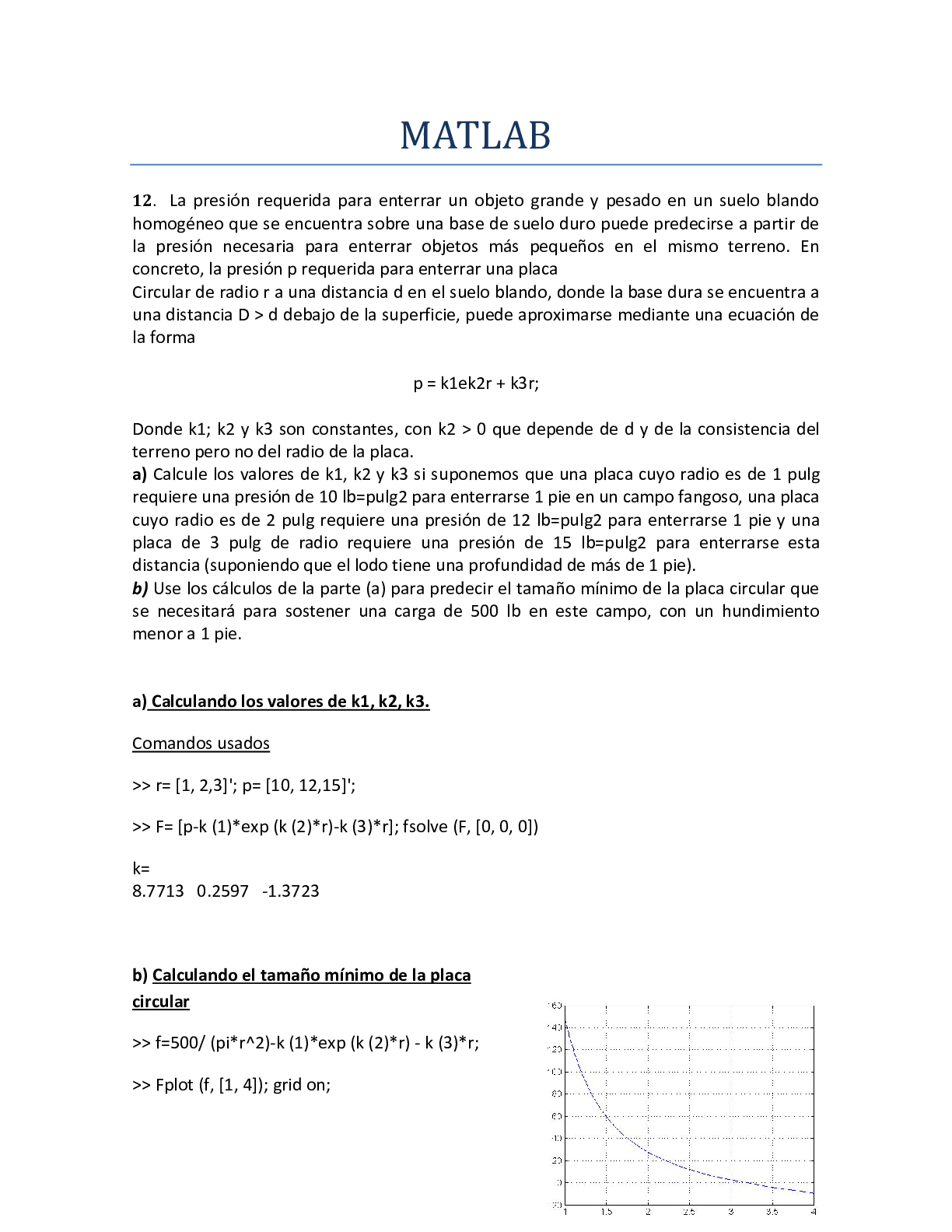

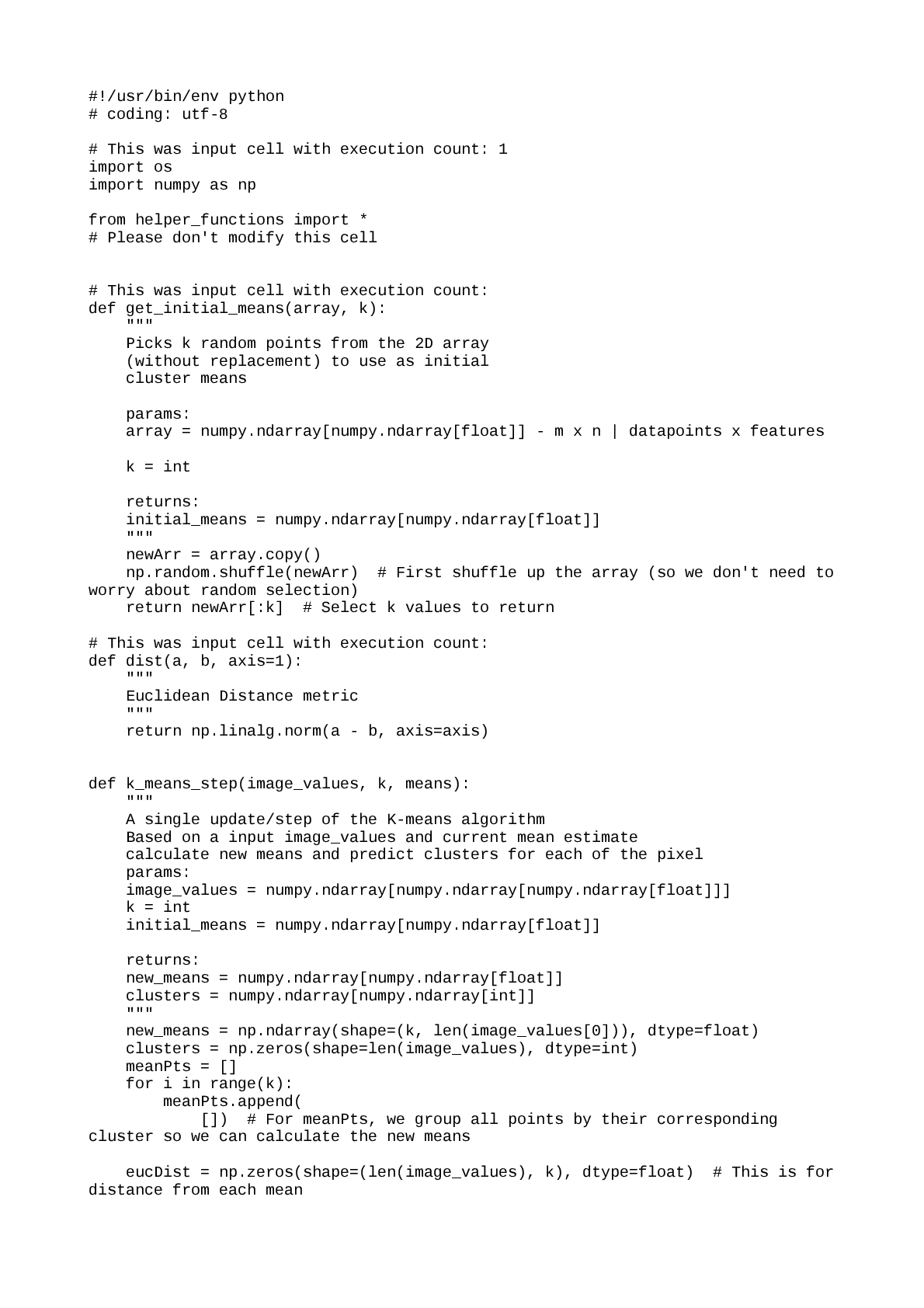
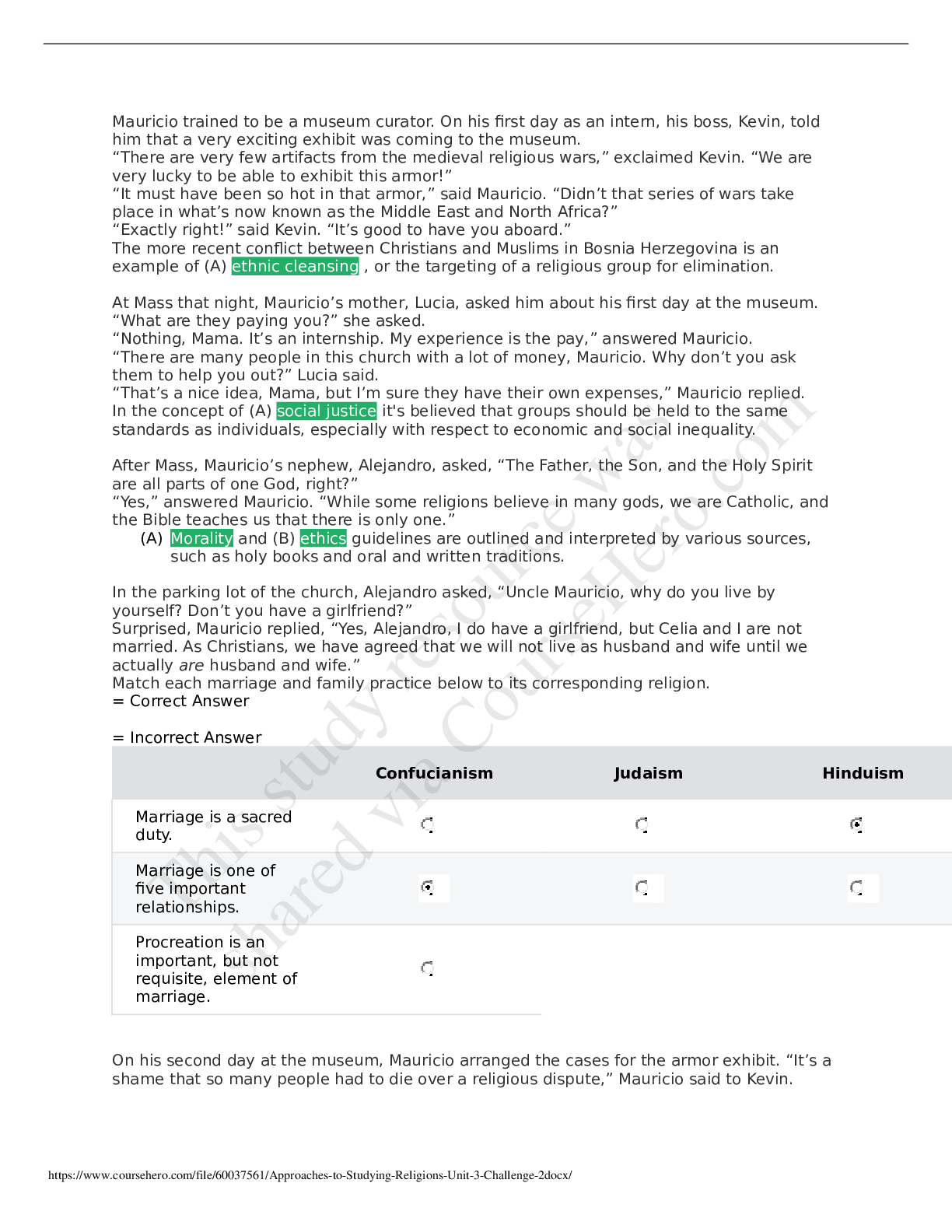
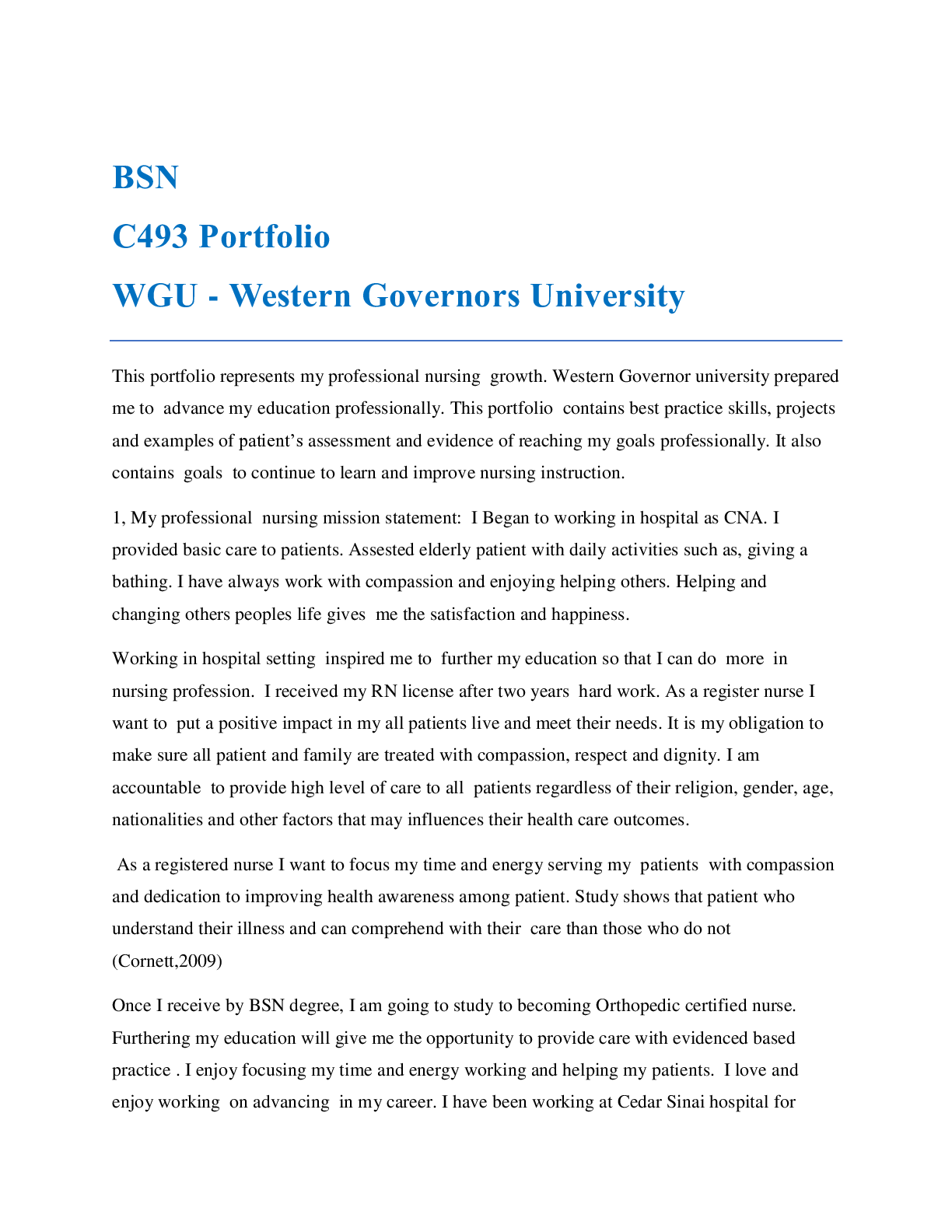
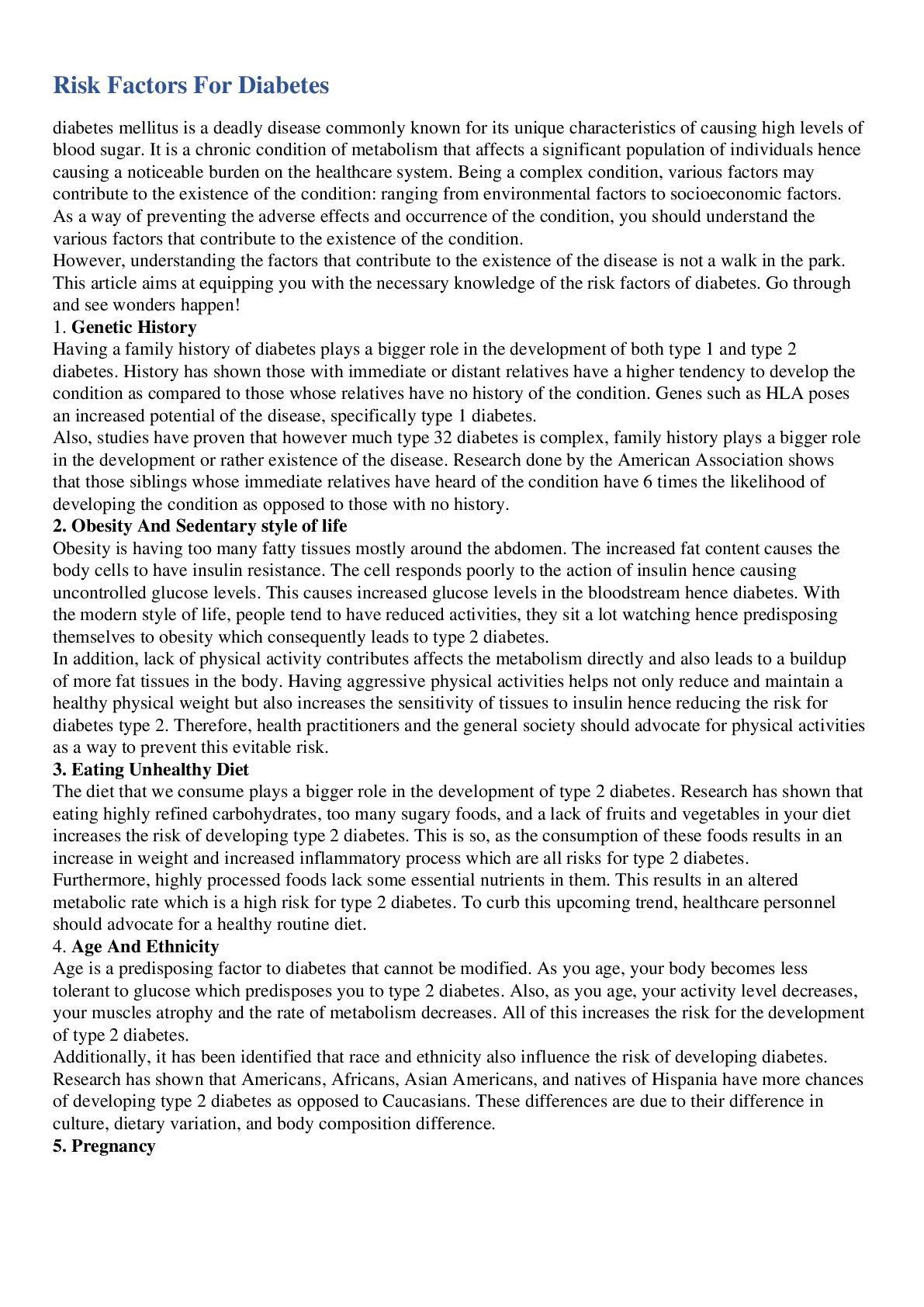
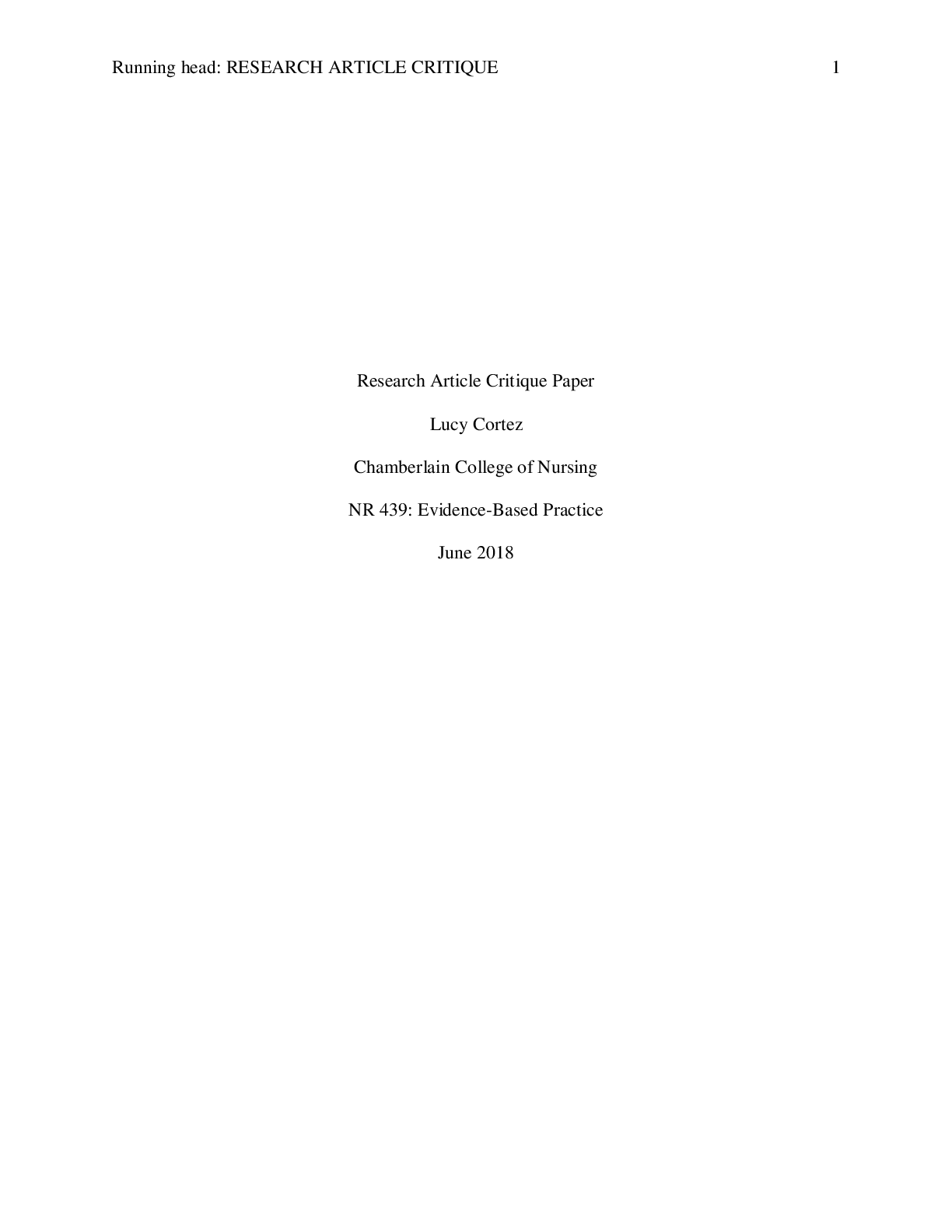
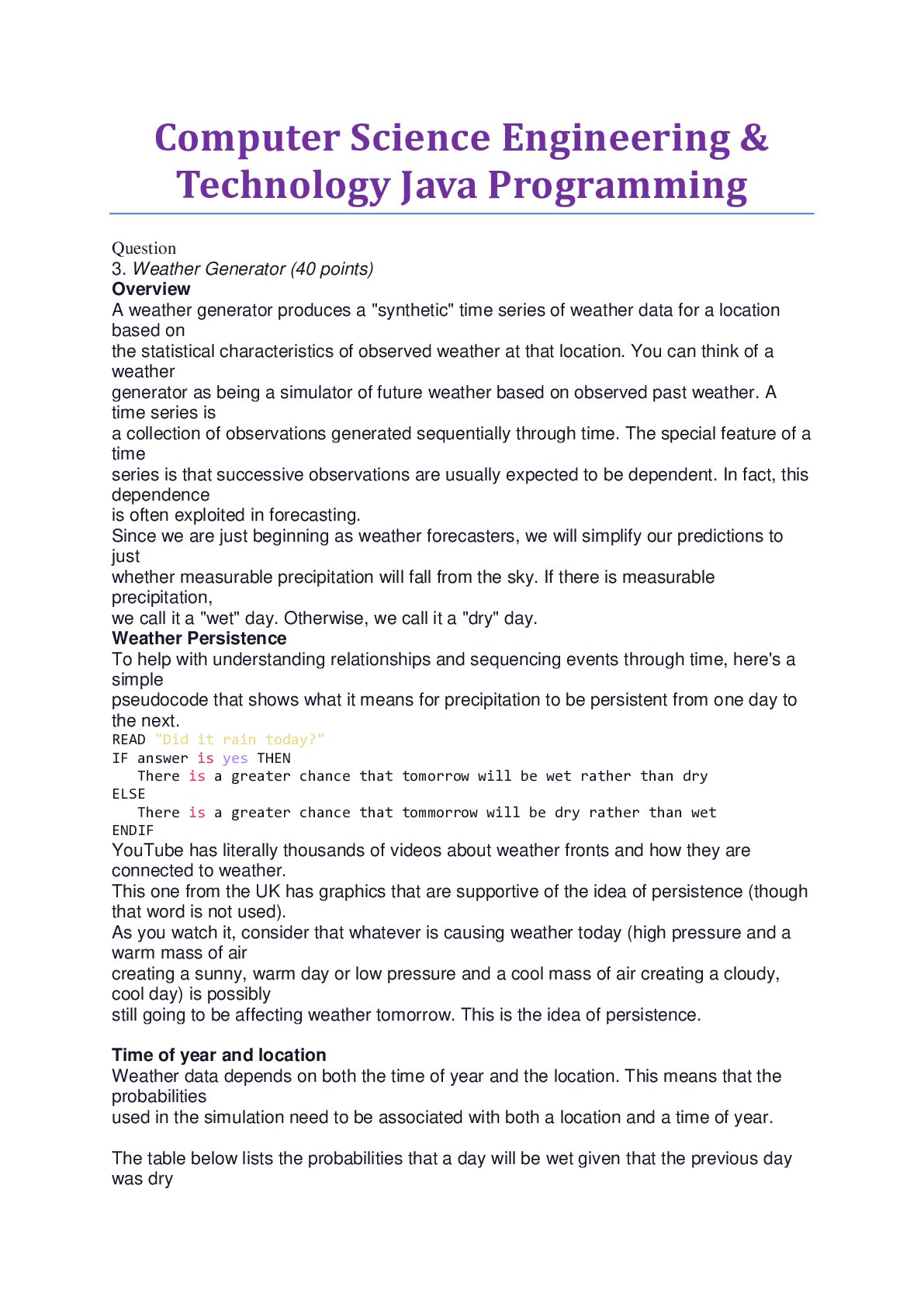
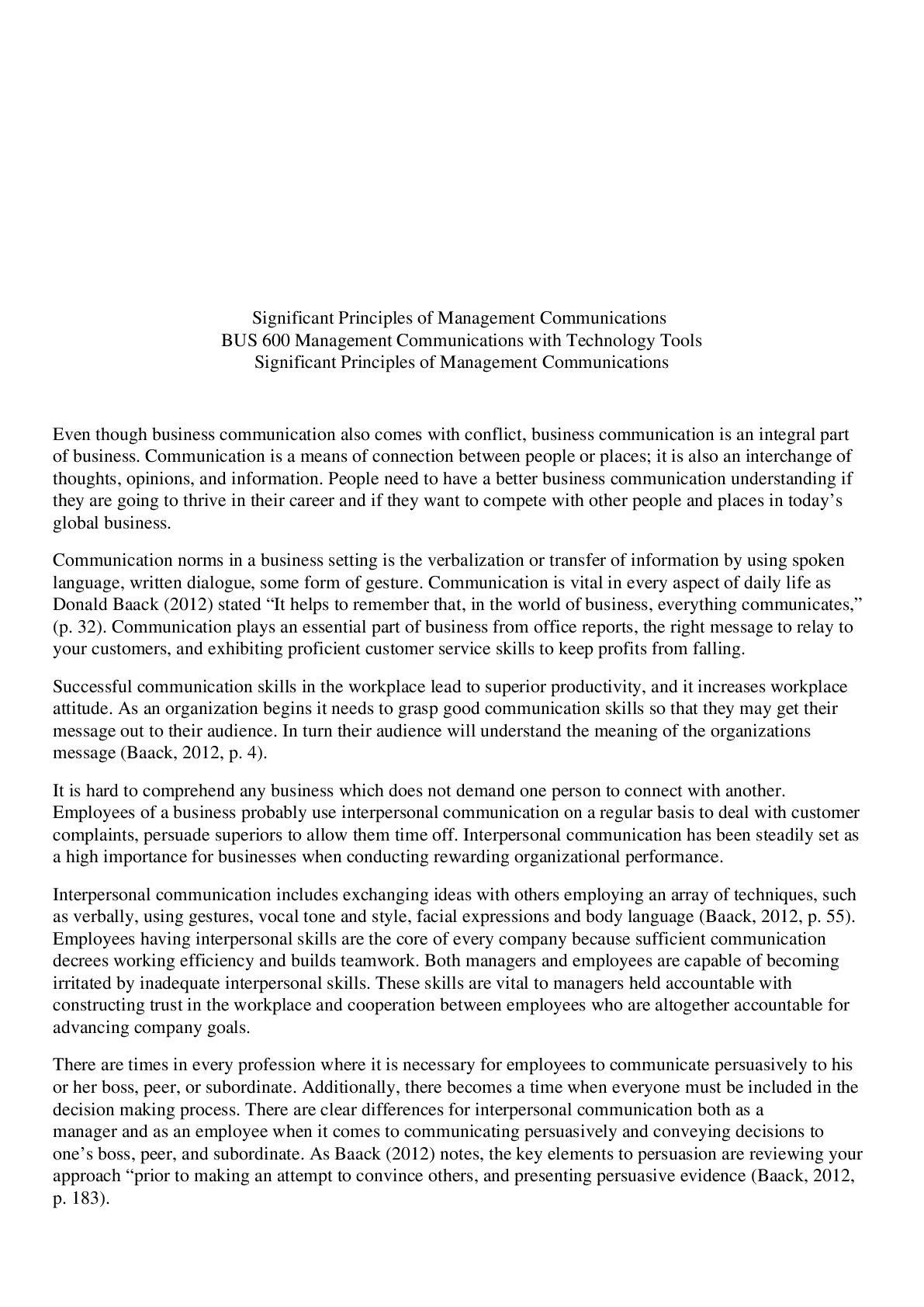
Interdisciplinary Paper.png)


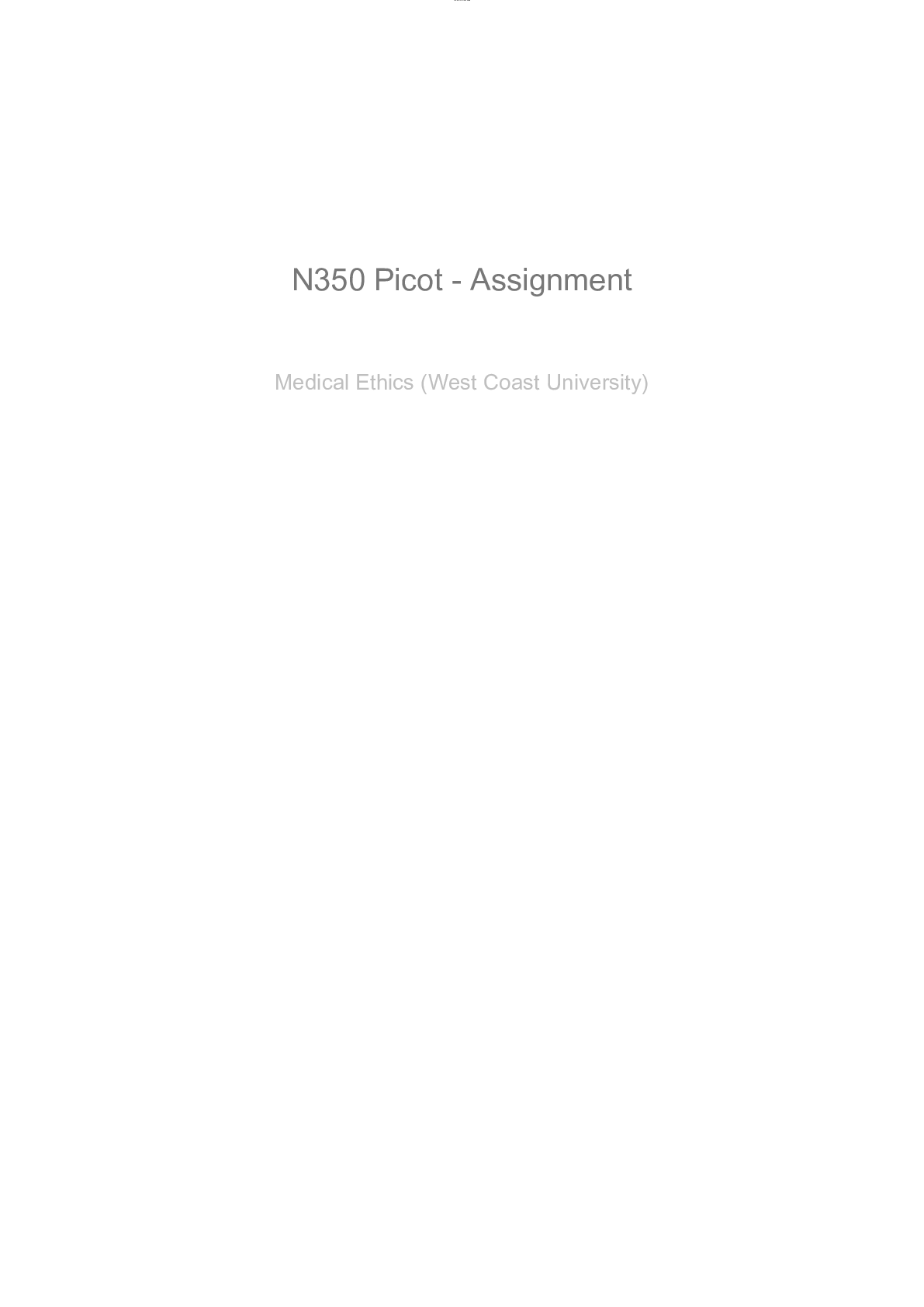
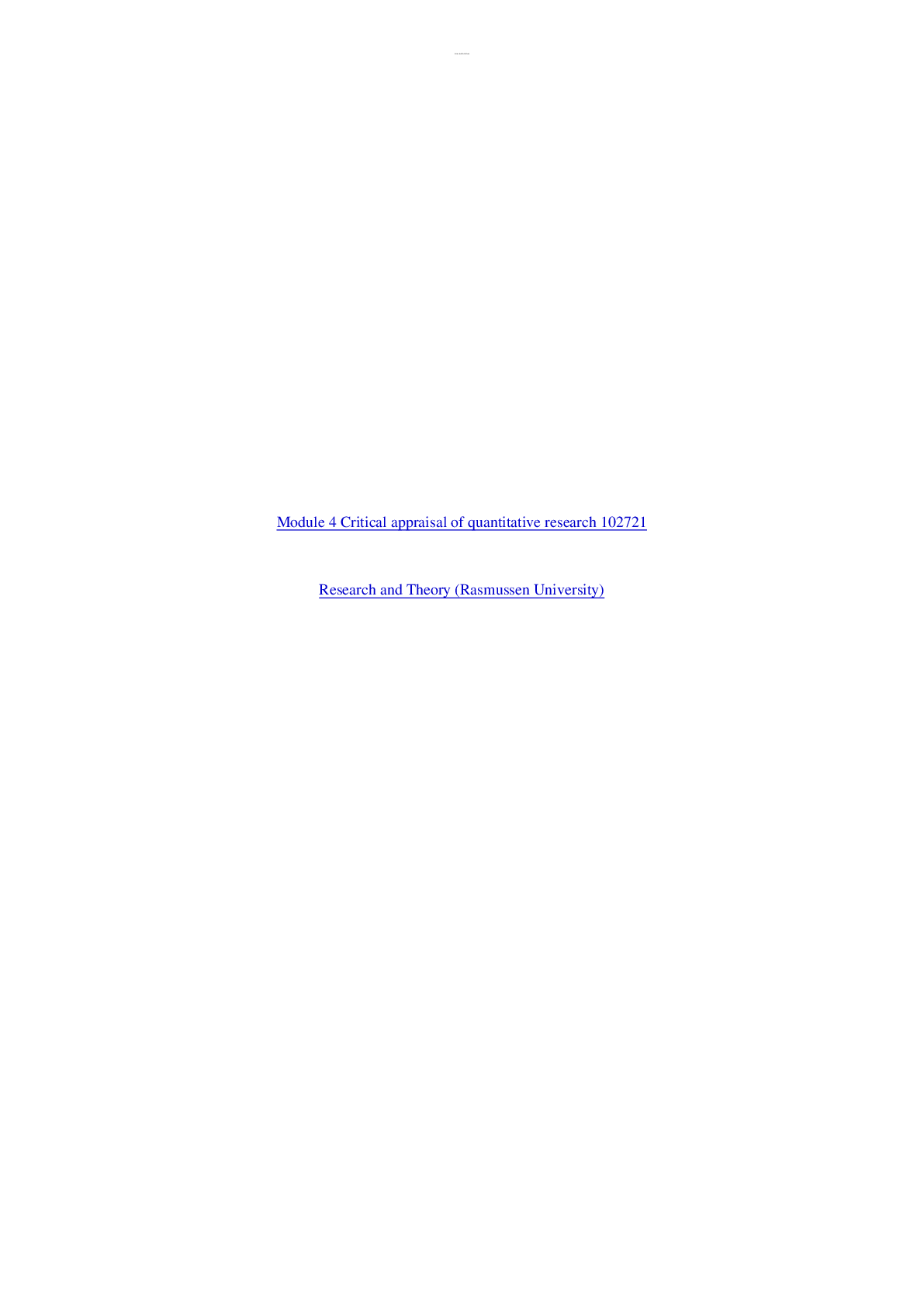

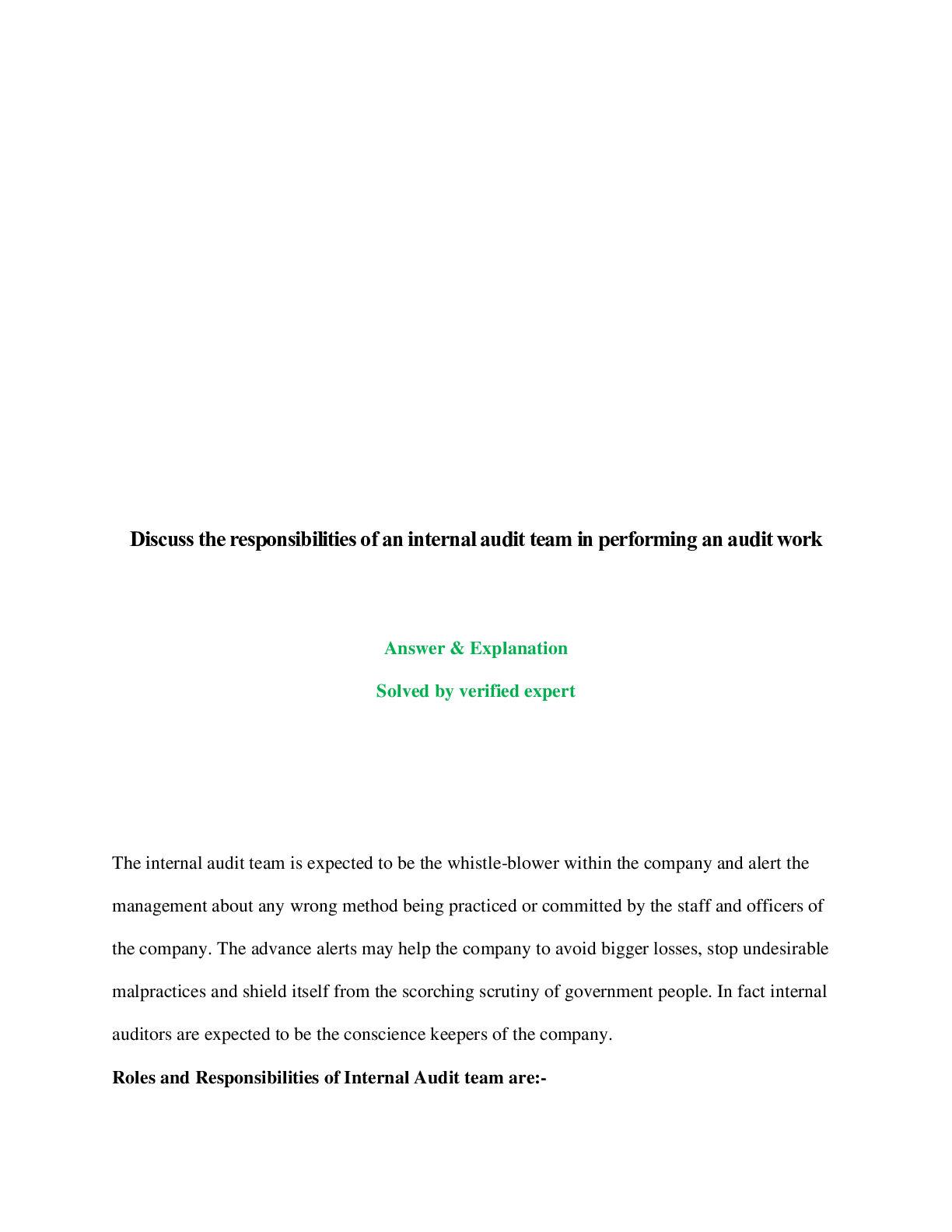



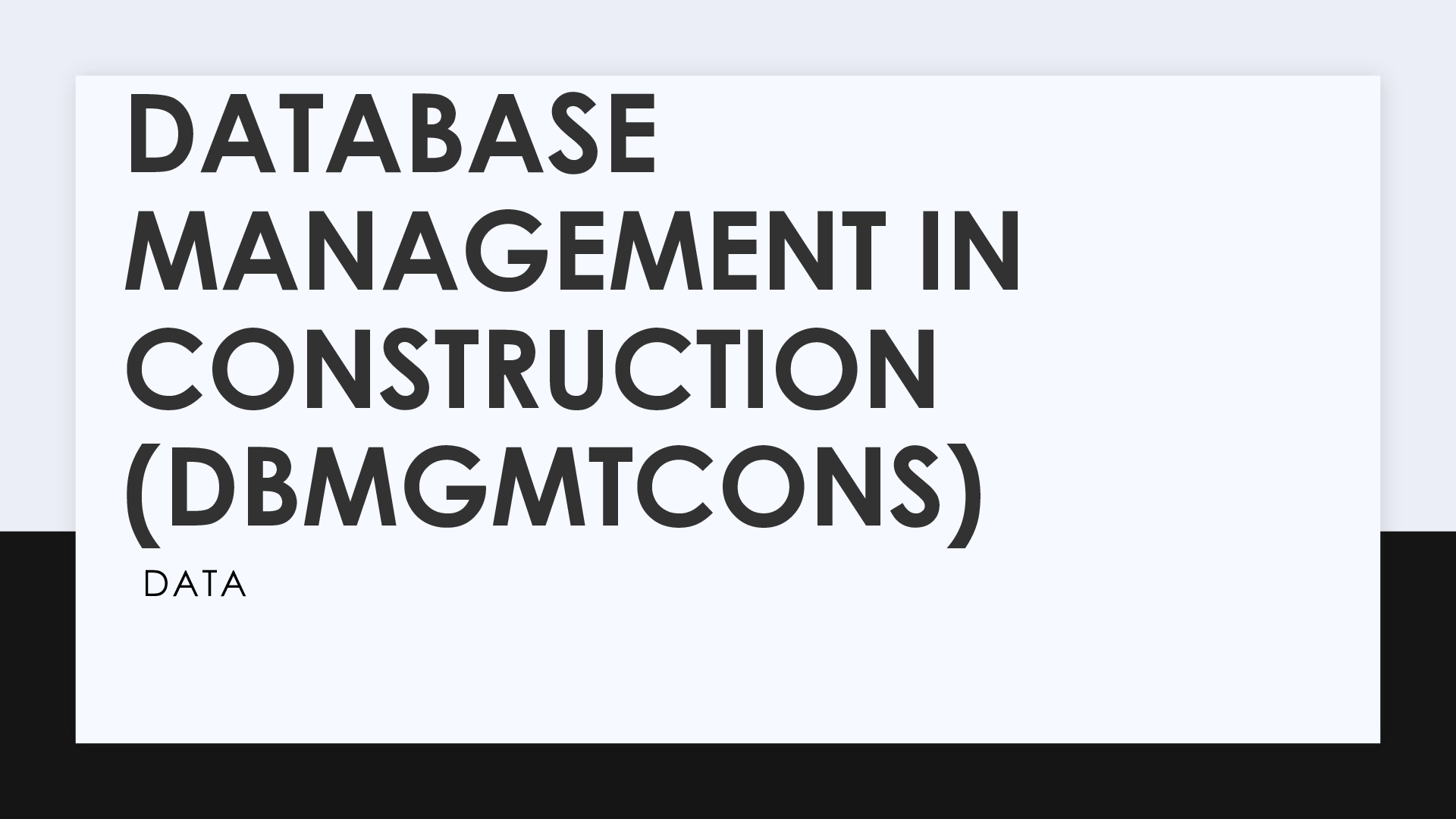
dfdfefe.png)

